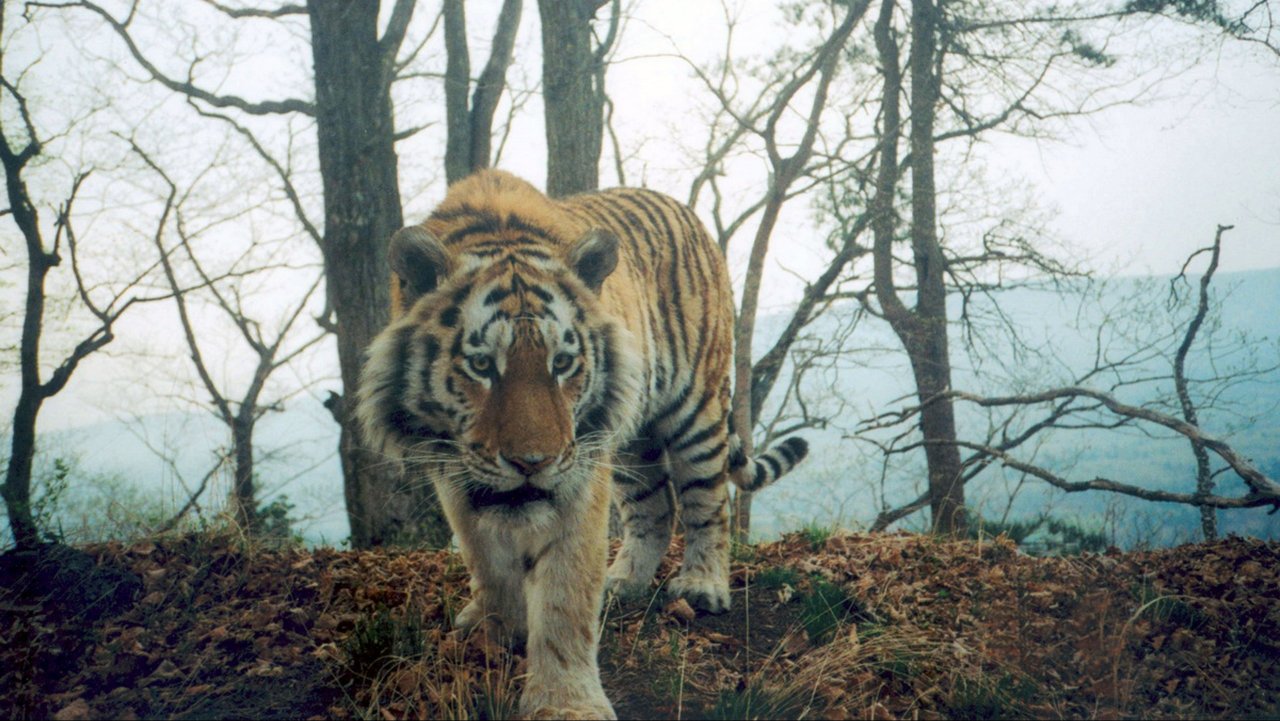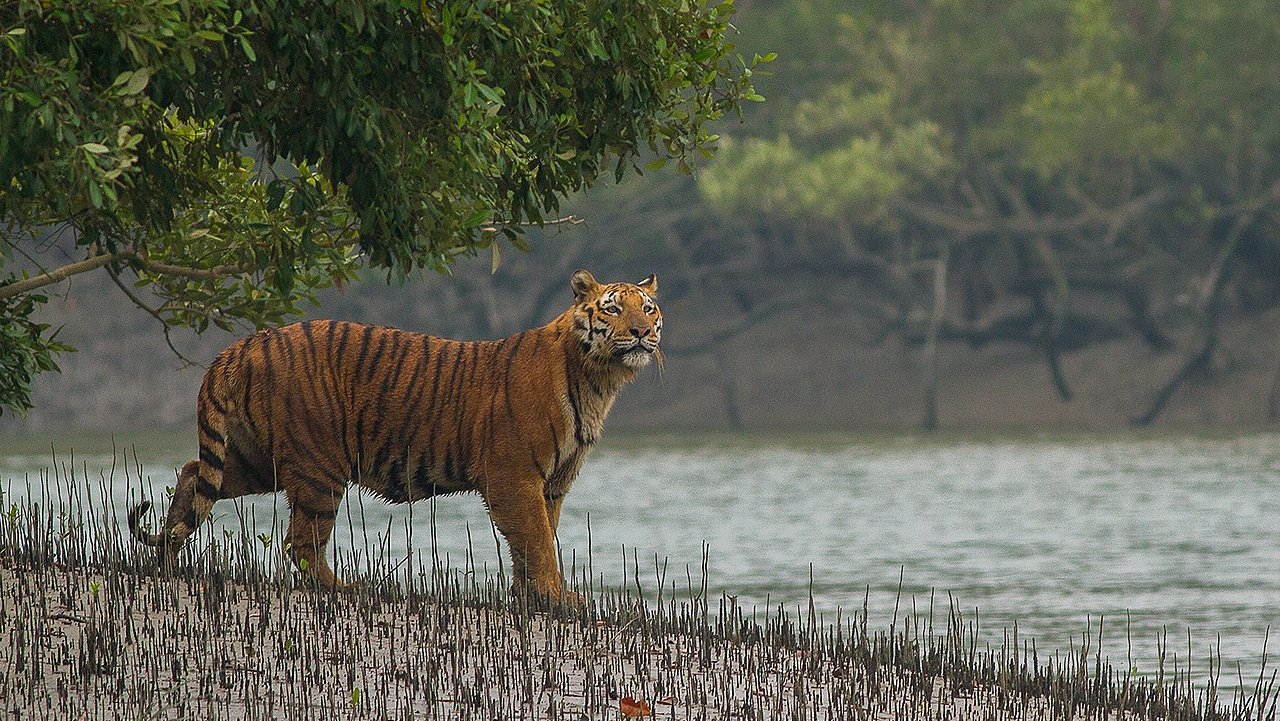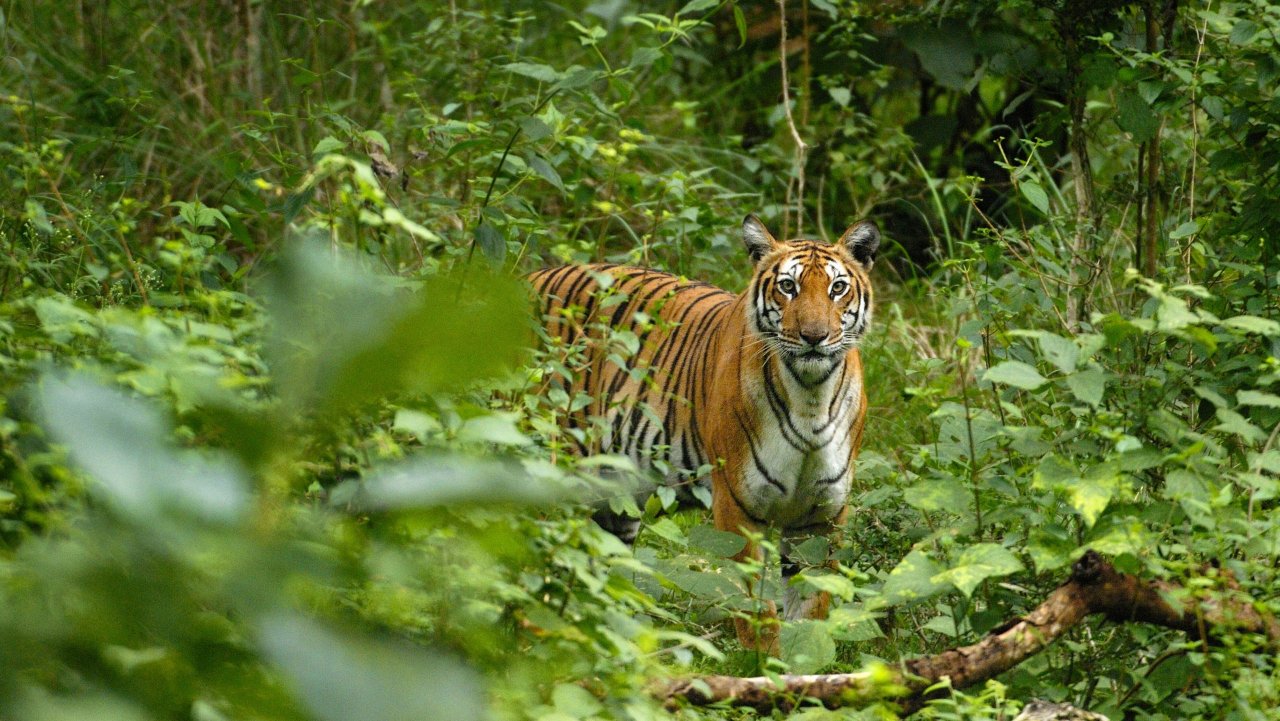Views and opinions expressed in blog posts are those of the individuals expressing them and do not necessarily reflect those of THIRTEEN Productions LLC/The WNET Group.

This Earth Day, the Royal Government of Bhutan, under the Patronage of Her Majesty the Queen, welcomes tiger conservationists, government ministers, and experts from the worlds of philanthropy, development, and finance to chart a course to protect and rewild tigers across their range. Photo credit: ©WCS
This Earth Day I want to take you halfway around the globe to the nation of Bhutan. Nestled between India and China on the eastern edge of the Himalayas, this Buddhist Kingdom with broad swaths of pristine nature is the only nation in the world with a Gross National Happiness index. This index seeks to capture human well-being using the measures of cultural preservation, economic development, good governance, and environmental conservation.
It’s that fourth pillar that demands our attention today, as the Royal Government of Bhutan, under the Patronage of Her Majesty the Queen, welcomes tiger conservationists, government ministers, and experts from the worlds of philanthropy, development, and finance to chart a course toward raising an additional one billion dollars to protect and rewild tigers across their range over the next decade.
The conference comes a decade and a half after the global tiger population reached a historic low of 3,200 tigers, down from roughly 100,000 individuals a century earlier. In 2010, tiger conservationists grappled with the reality that of the threats faced by tigers—including habitat loss, human-tiger conflict, and poaching—poaching had become existential for the species.

By the time of the 2022 Red List assessment of tigers’ conservation status by the International Union for Conservation of Nature (IUCN), tiger numbers had increased from the 3,200 to approximately 4,500. Photo credit : ©WCS Bangladesh
Valued by criminal gangs for a bustling trade in tiger bones, organs, and other parts for perceived medicinal properties, tigers (and the prey they require for survival) were being removed at such high rates that by 2013 they had become locally extinct in Vietnam, Laos, and Cambodia. In response, conservationists began working with local authorities where tigers persisted to develop better modes of apprehending poachers.
Viable tiger populations require vast territories to persist, ranging from 500 to over a 10,000 square kilometers. Developing effective strategies to neutralize poaching gangs and individuals requires deep understandings of local conditions, but with a combination of deterrence patrolling and directed interventions, it has been possible to begin the process of recovery in multiple tiger conservation landscapes.
Working with monitoring technology that can provide real-time data on the position of poachers in a given area, conservationists and local law enforcement have been able to effectively curb the catastrophic decline in tiger numbers in a diverse array of landscapes, ranging from Thailand’s Huai Kha Khaeng Wildlife Sanctuary to India’s Manas National Park to Land of the Leopard National Park in the Russian Far East.

Viable tiger populations require vast territories to persist. Photo credit: Kalyan Varma ©WCS.
By the time of the 2022 Red List assessment of tigers’ conservation status by the International Union for Conservation of Nature, tiger numbers had increased from the 3,200 to approximately 4,500. Today, it is fair to say, tiger conservationists understand how—and have the tools—to conduct successful tiger conservation. Yet tigers remain “Endangered,” to use Red List parlance.
Without persistent efforts, the battle against poaching will be lost, and with it the recent gains in tiger numbers. Combatting poaching is just one of many goals on tiger conservationists’ to-do list. That also includes securing migratory corridors to connect non-adjacent tiger habitat, as well as reducing conflict between tigers and people and finding recipes for the coexistence of people and big cats.
It will take great resources and a long-term commitment with focus at each individual tiger landscape if we are to see tigers roaming once again in the forests of Cambodia, Laos, Vietnam, and elsewhere across Asia. That’s why some of the leading tiger conservationists are in Bhutan today, and why they have been joined by experts in development assistance and finance. Securing a billion dollars over 10 years is a tall order, but the alternative is to see a magnificent, iconic species wink out in our lifetimes.

A healthy tiger landscape, where tigers and their prey have not been hunted out, will tend to have other signs of ecosystem health. Photo credit: Dale Miquelle ©WCS
The world is ever more connected today. We may be half a world from Bhutan and its wild tigers, but right here in New York City we have both Malayan and Amur tigers at the Bronx Zoo. It requires only a short trip to this world famous park to connect with one of our most exquisite—and exquisitely threatened—species, and to remember what dedicated biologists and policymakers are fighting for in Bhutan.
In a sense that is the very essence of Earth Day. Wildlife biologists sometimes refer to tigers as an indicator species. A healthy tiger landscape, where tigers and their prey have not been hunted out, will tend to have other signs of ecosystem health: an abundance of trees that capture carbon, soils that hold water so precious for wildlife and people alike.
In short, a forest with tigers is a sign of a healthy planet, with benefits for not just wildlife, but the people who rely on those forests for natural resources, clean air, clean water, as well as the sequestering carbon and mitigating the impacts of climate change. And that’s a lesson for us all this Earth Day.
